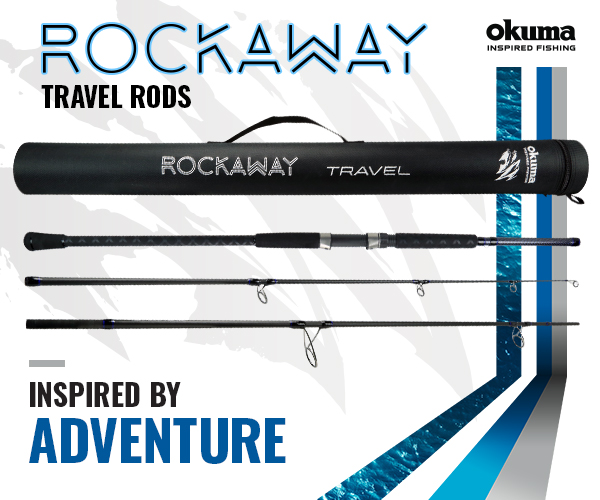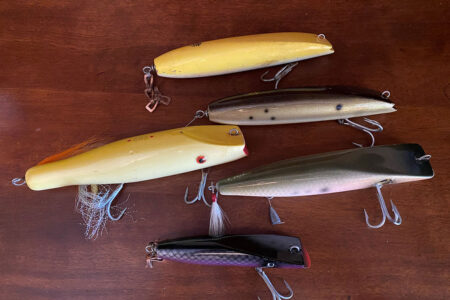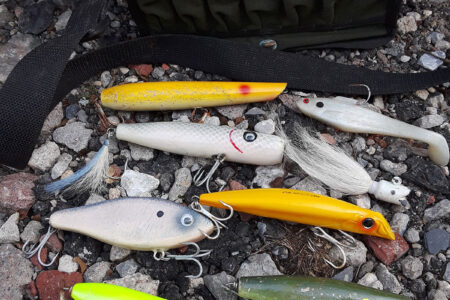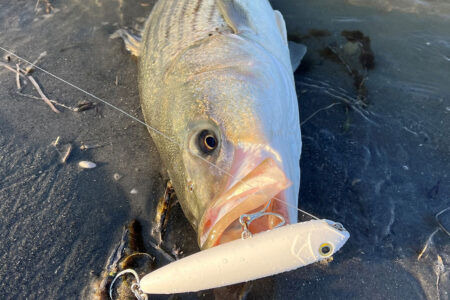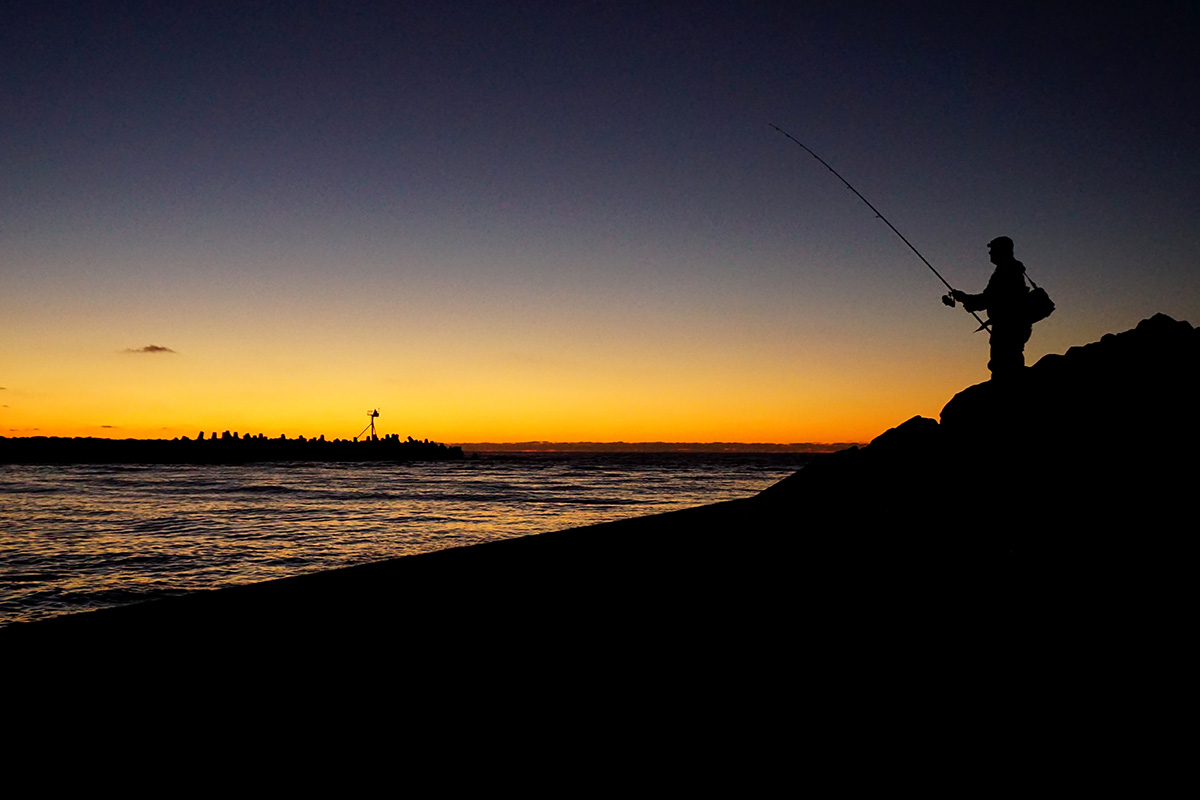
A look at must-have surf plugs with tips on how and where to fish them for maximum success.
Walk into a well-stocked tackle shop and you’re likely to be confronted with multiple walls filled with plugs from floor to ceiling. While some of them catch more fishermen than they do fish, there are certain “must-haves” that should be in the bag of every self-respecting surfcaster along the Striper Coast.
Some plugs wiggle, while others splish and splash; you’ll find a few sporting paints and patterns that would’ve made Picasso blush, while still others are molded dead-ringers for the real deal.
Distinguishing which ones to shell out your hard-earned cash for can be a daunting task. And while collectors intensely search through bargain bin boxes and estate sales looking for that priceless treasure for the mantelpiece, these working plugs deserve lots of attention when lining up your arsenal for the fall run.
Metal Lips
By Fred Golofaro
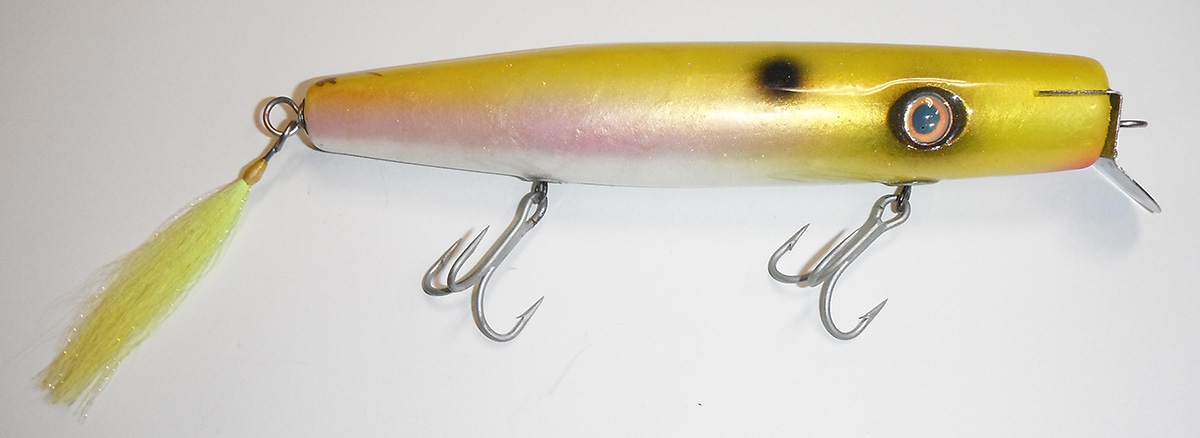
Overlooked by many casters, these plugs, especially in larger sizes, have a knack for producing quality stripers and blues. Although they can be made to fish on or below the surface, and some models are designed to run well below the surface, my first choice is to swim them on the surface. When worked properly, that seductive, tantalizing side to side wiggle drives stripers and big blues crazy, and generates explosive surface strikes.
Long standing favorites like the Gibb’s Danny, the Jr. Atom, Atom 40 and Tsunami’s Timber Lure TS40 are readily available, along with numerous custom made designs, among them, Beachmaster, Big Fischer, Big Water and Big Rock to name a few. Most of these custom jobs are available in limited numbers, and some sell out as soon as they hit tackle shop shelves. Classics like original Dannys, especially those made by Dan Pinchney and Super Strike’s Don Musso (the original designer of the Danny Plug) and Bob Hahn plugs can sometimes be found at garage sales, flea markets or bought from some retiring long time surfmen. Keep in mind though that you’ll be competing with plug collectors for some of those models, and the cost is probably prohibitive for a plug you intend to fish.
While smaller versions of these plugs are available and can be very effective at times, particularly those mimicking peanut bunker in size and profile, it’s the 6- to 8-inch models that get most of my attention, and tend to draw the largest fish. They also have the ability to draw fish up from 20 feet of water thanks to their larger profile and the surface disturbance caused by their swimming action.
When it comes to matching the hatch, these plugs make obvious sense when fish are feeding on bunker, herring, shad, mackerel, small bluefish and a host of other large baitfish. But don’t overlook going to the other extreme. I’ve had success a number of times by turning to one of these large plugs when bass were being especially finicky as they fed on tiny white bait or baby sand eels. Most times it resulted in just hooking two or three fish, but they were often the only fish taken among a small group of casters.
Adjusting the plug to swim on the surface is accomplished by using a pair of pliers to bend the eye of the plug in the opposite direction you want it to swim. Bend it down to make it swim higher on the surface, and up to make it swim below the surface. Try to avoid messing with the plug unless the lure is not swimming properly to begin with, in which case you have nothing to lose.
I prefer a plug with a nice side to side kick that leaves a very noticeable wake.
To allow for better side to side movement at a slower rate of retrieve, I often remove the tail hook from these plugs. You will miss few, if any, strikes from bass since they almost always take these lures head first. Especially when white bait is in evidence, adding a small tuft of hooklessbucktail to the tail often results in more strikes, something that master plug builder Don Musso convinced me of more years ago than I care to remember.
When fished on the surface, these lures are easier to fish in the daytime for most anglers because you must maintain constant contact with the plug and adjust your retrieve accordingly in order to get just the right swimming action throughout the retrieve. You need to make adjustments as the lure swings in the current and also as your lure is slowed down or speeded up by wave movement. This is not to say they are not an effective nighttime plug, but they are much easier to fish when you can track their movement from start to finish. The more you fish them, the less dependent you will be on sight, as you develop a better feel for the plug’s proper action.
If metal lips have one drawback, it is their lack of castability compared to other surface plugs like pencil poppers, Polaris poppers and spook type plugs. They are ideal for those times when big bass and blues feed tight to the beach, making long casts unnecessary. Casting these plugs, especially the larger models, requires more of a lob type cast. They are just too wind resistant to fire off like other lures. I like to finger my line as the plug is descending, allowing it to slap the surface as it lands. That slapping sound draws the attention of cruising stripers, especially in calm water, and sometimes elicits a strike as soon as the plug hits the water.
I have read where these plugs are not effective in calm water. In fact, just the opposite is true, and I have caught scores of big stripers in calm water conditions to drive this point home. The drawing ability of these plugs is enhanced by a calm surface, although a slight chop that doesn’t impact the plug’s action helps mask the imposter. Another ideal situation is when you have a decent surf running but the surface is calm. Under these conditions, time your casts so that you can work the white water left on the backside of breaking waves.
The ultimate reward in fishing these plugs is when a 30 or better striper rises from the depths to crash your offering, setting off a shower of spray and some wild surface antics. Have this happen once, and you will be hooked.
Spooks
By Toby Lapinski
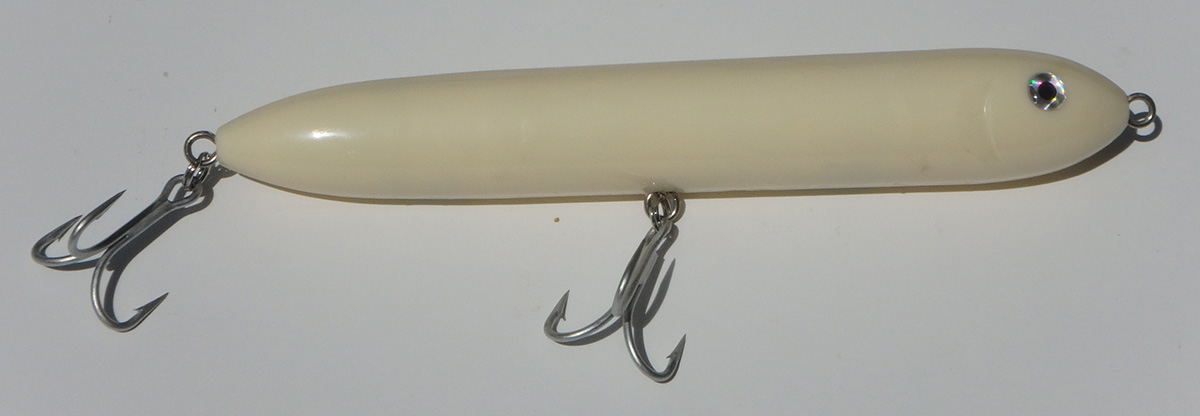
The spook is a type of topwater lure that began its life on the freshwater side, made famous as the Zara-Spook. With its popularity and success it was a no-brainer that it would cross over into the salt, and eventually manufacturers began producing them in larger and larger sizes geared towards saltwater-tough predators. For years the Doc and Li’L Doc produced by Drifter Tackle were the secret bait of a select group of striped bass hunters, but they couldn’t keep the secret forever. Eventually word got out that this 7- and 9-inch lure was downright deadly on huge striped bass. The 247 Lures Mully, Tattoo’s Tackle Sea Dog and Sea Pup, Gibbs Pro-Series Glider, Tsunami Bluewater Stick Lure, Heddon Saltwater Super Zara Spook XT and others fall into this category along with the aforementioned Doc.
In general, spooks work best in calmer water situations, or when you can work them in the same direction as the current. Large waves and hard-running currents can make it difficult to both stay in contact with and properly work a spook, as does a strong cross wind. When large baitfish such as bunker, mackerel or shad are being preyed upon by even bigger predators, the sloshing, side-to-side action of a large spook is tough to beat. Not too surprisingly, this type of lure has an action that is similar to two of the other lures described in this article, the darter and the glide bait. There is simply something to the side-to-side, walk-the-dog movement that large striped bass, bluefish and other gamefish simply cannot resist!
In the early spring when hunting those first schoolies, as well as when speedsters like false albacore and bonito move inshore later in the season, small spooks like the Rebel Jumpin’ Minnow or Williamson Surface Pro Spook are excellent choices. These baits can be worked fast or slow along the surface while still maintaining that side-to-side action. They have all the fishy appeal of their big brother but deliver it in a smaller package.
Darters and Bottles
By Fred Golofaro
These plugs boast a long legacy along the Striper Coast. I have used them effectively throughout New England, including Cape Cod, Nantucket, Martha’s Vineyard, the Rhode Island Coast and Block Island. They have produced fish for me in the bays, inlets and open beaches of Long Island, and especially at Montauk, and some Jersey casters have racked up impressive scores on these plugs along the Jersey Shore.
Darters

When it comes to fishing darters, the general belief is that you need good current or moving water for these plugs to be effective, but that is not always the case. Ideally, this tool was made for swinging through rips or moving water that accelerates the side to side swimming action of the darter. When the plug is working “right” you will feel it vibrating as its lip and sloped front resist the current.
Most casters opt to cast slightly upcurrent, usually at about 11 o’clock and then let the plug swing into position where it develops the desired action. Once the plug lands, a short, sharp sweep of the rod helps dig the plug in. In situations where there is not a lineup of casters to interfere with, I prefer to slightly angle my cast down current between. This has the plug working effectively at the maximum distance of my cast. There is no waiting and losing distance that comes with casting the plug up-current. If there are other casters nearby and it is necessary to angle your cast up-current, allow the plug to drift, and hold off on retrieving it until it reaches the 12 o’clock position.
The rate of retrieve varies according to the current and the position of the plug in the rip or current. At some point during the retrieve you will likely be able to stop your retrieve entirely and allow the plug to work against the current. The harder the plug is working, the slower you can retrieve it.
Now, despite all of the references to getting the plug “working” properly in currents and rips, I can also tell you that I have caught many stripers on darters along open sand beaches with minimal water movement. There are situations along the open beach where you find water moving parallel to the shoreline, or where there are openings in an outer bar creating an outward movement of water as a slough or bowl empties, and in these cases much of what we discussed above still holds true. However, I have caught plenty of stripers along beaches with no water movement in situations where most casters would never think of tossing a darter. Most of these cases involved the presence of large baitfish like bunker or small weakfish.
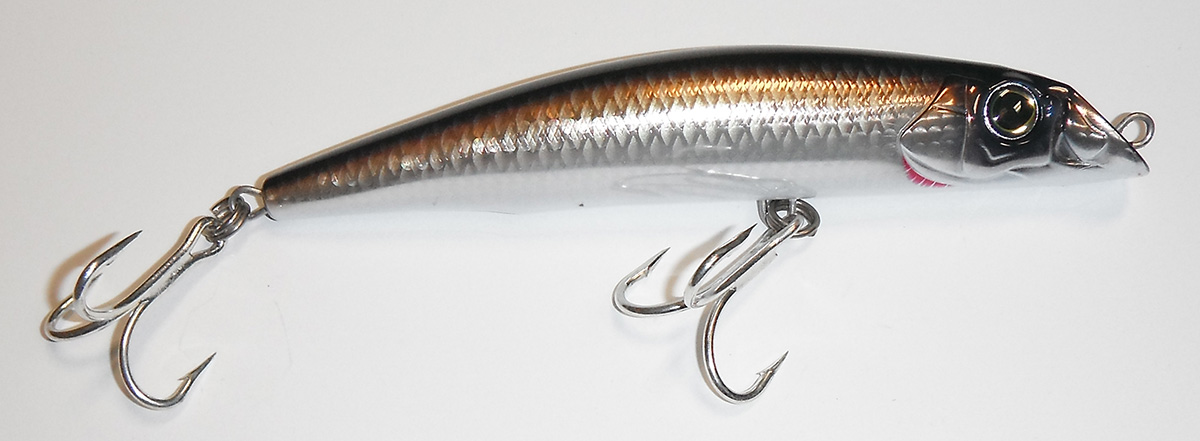
You’ll find a number of custom wood darters on the market and some work very well but can be difficult to find on a regular basis. On the other hand, Super Strike and Gibbs, stalwarts in the surf plug market, are readily available in most tackle shops and they catch fish. Don and Steve Musso of Super Strike produce a plastic darter that you can count on swimming properly right out of the package and you don’t have to worry about the lip being damaged or destroyed by banging into rocks. Yo-Zuri’s Mag Darter has been a big hit with the surf crowd, and that popularity has zoomed with the recently introduced larger 6-1/2-inch model. The Gibbs Darter has been around longer than most of you reading this and continues to be an effective plug. I always have a couple of these plugs in my arsenal for those rare occasions when wood outfishes the plastic.
Bottle Plugs
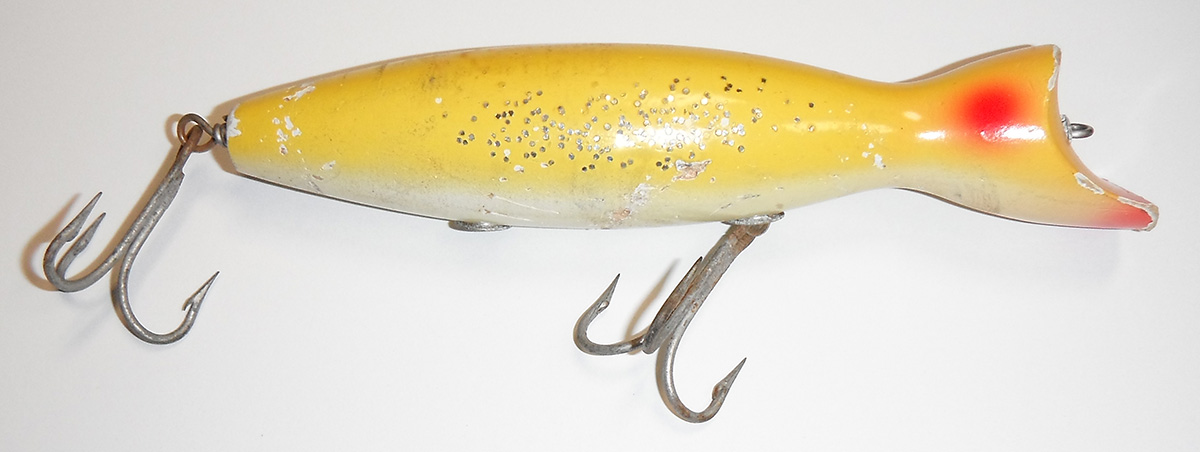
The bottle plug actually refers to the Gibbs Casting Swimmer and the Super Strike Little Neck Swimmer, but the design has been referred to as the bottle plug by generations of casters. No plug holds better in a rough surf or a strong sweep than the bottle, and the 3-ounce Gibbs has accounted for more than its share of trophy stripers over the years, including at least two over 60 pounds that I am aware of – both bottoming out my 60-pound scale, and both caught by other casters. When no other plug is fishable in a heavy surf, this plug retains the ability to continue working effectively, the large built-in lip digging in and holding in big water conditions. One modification I suggest is to remove the middle and tail hooks and replace the 3/0 trebles with 4/0s.
However, if I had to pack just one bottle in our bag, it would be the smaller, medium size model since it will still hold in the moderately rough water conditions you’re likely to encounter, is easier to load on a cast, and will still appeal to big fish. Super Strike’s Little Neck Swimmer falls into this same category, but swims slightly deeper than the wood Gibbs model, which also enables it to hold better in bigger water.
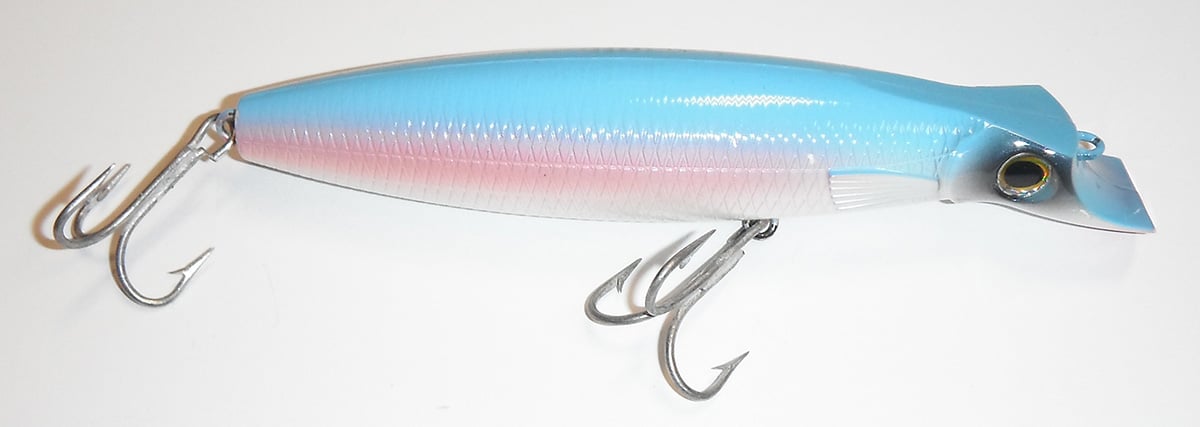
The Bottle Darter is a cross breed that some feel delivers the best of both plug designs. North Bar Lures is the sole manufacturer of plastic bottle darters, but some North Bar wood models can still be found on tackle shop walls.
Working the bottle plug is very similar to the darter, applying a sharp sweep at the start of the retrieve to dig the plug in. Mostly considered a tool for moving water, it is also effective in still water conditions thanks to the exaggerated lip design that creates an easy swimming motion during the retrieve.
Plastic Stick Baits
By Toby Lapinski
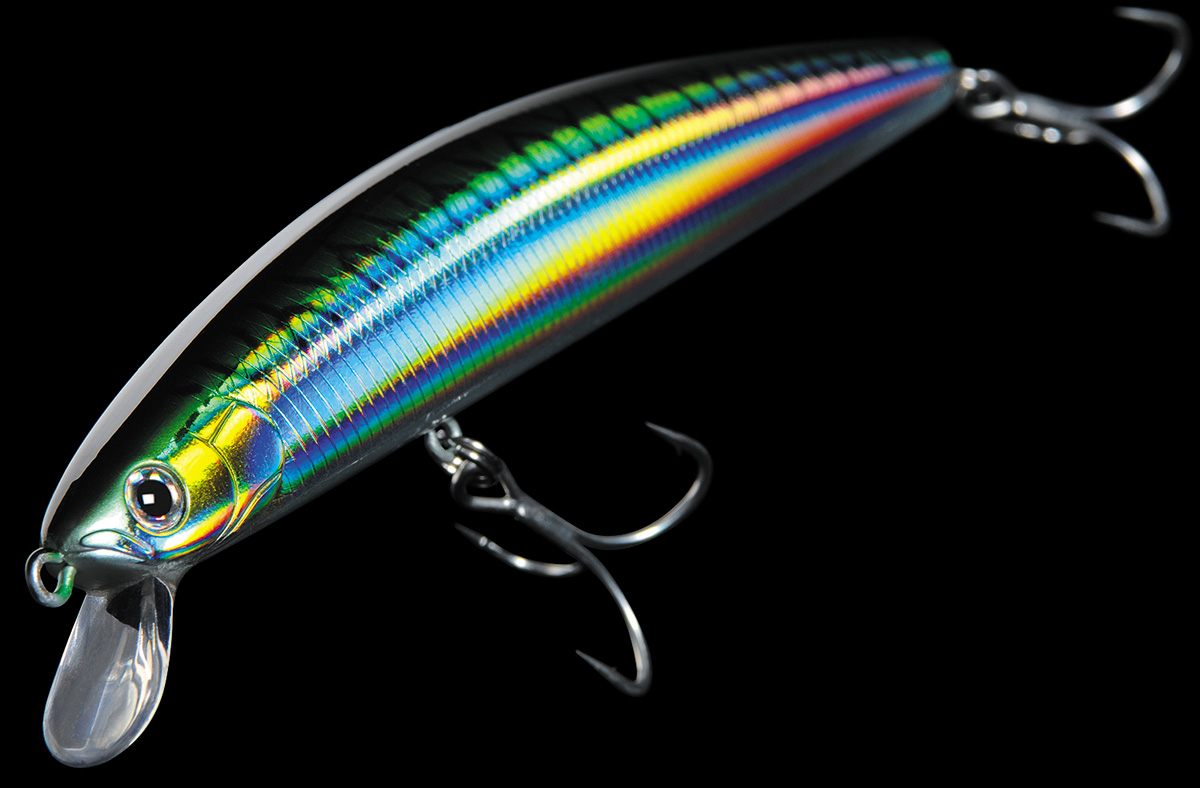
Whether you refer to them as swimmers, plastic swimmers, skinny plastic swimmers, minnow baits or a bunch of other variations, plastic stick baits are plain and simple fish-catchers! They mimic a wide variety of baitfish species from silversides to sand eels and beyond, and they are readily available at your local tackle shop.I consider these lures a searching lure as they have a way of at least telling me whether or not some fish are present at my chosen location. They often elicit strikes from stripers and blues when other lures might otherwise go unnoticed.
When working an outflow or breachway, a floating plastic stickbait is a perfect choice to fish out in the rip as they can be cast into an outgoing tide, free-spooled a great distance from shore and slowly reeled back in, covering a much greater expanse of water than might otherwise be afforded by simply casting and retrieving. This is a classic scenario for my home outflows of New England that has produced a great many fish over the years, and it’s sure to produce in your waters. Lures like the Bomber Long-A and Long Shot, Yo-Zuri Crystal Minnow, Daiwa SP Minnow or Rapala X-Rap are excellent choices in this scenario.
Along the open surf, these same minnow plugs can be cast and retrieved when a wide variety of baitfish are in the wash. While they are excellent at mimicking slim-bodied baitfish like sand eels or silversides, they are also effective when larger-profile baits like bunker and mullet are present.
As far as when to fish plastic stick baits when taking water and weather conditions into consideration, simply put as long as you can make a cast and stay in contact with the plug then you’re doing fine. When dealing with a hard cross wind and running tide, a lure like a loaded Red Fin is quite often the first plug out of my bag. They can be punched into the wind and then bite and hold in the melee where large striped bass hunt.
Poppers
By Jim Hutchinson, Jr.
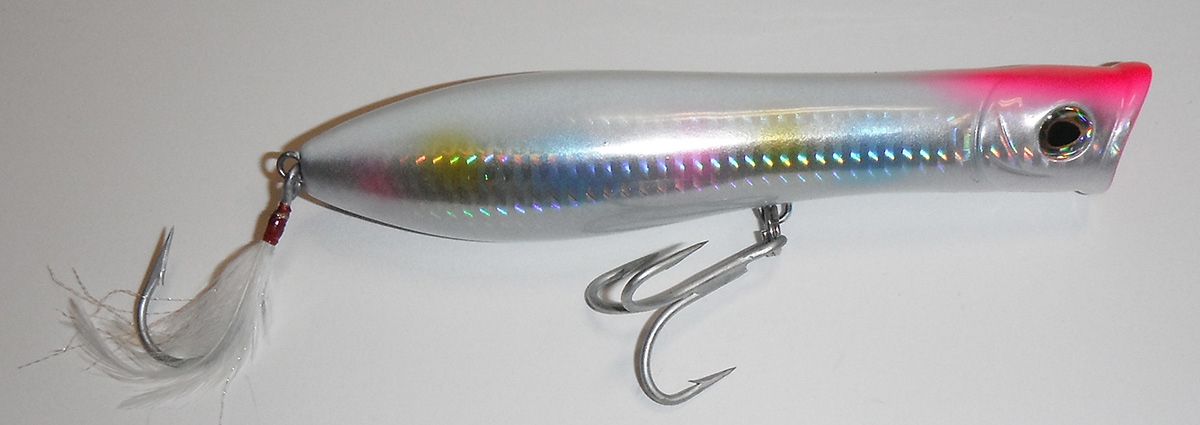
When the surf is relatively calm, my favorite lure for the first few casts is the popper; the choice between “pencil” and the more traditional cupped or “polaris” style becoming my only real dilemma. So long as winds are not blowing sideways, the pencil in particular is highly effective for prospecting, especially in calmer waters, no matter what the season or bait. Most models, Gibb’s woods and molded Tsunami Talking Poppers of 2 ounces or better as examples, are long-distance champs that cover more area of water in those initial casts. The old woods are favorites for traditional surfcasters, while some of today’s hardened plastic models with weight-transfer balls incorporated into the body give the pencil popper some real oomph in terms of getting out beyond the bar.
The splashing, skittering action of a pencil with side-to-side swimming looks like a fleeing baitfish, and when worked properly draws stripers from a couple of dozen feet down, out and sideways, depending on water clarity and conditions. Visually, there’s probably no better thrill in the world than watching stripers explode on a pencil, with even the occasional miss and tail-slapping enough to get the adrenaline rushing. For the uninitiated, getting a pencil to work well takes a wee bit of practice; the butt of the rod between your legs, moving the rod tip forward and back while keeping time with the alternating cranks on the reel handle. With all parts working together in almost machine-like cadence, the lure should appear almost like a snake on the surface of the water with the tail end on the water, and the pencil’s tip in the air and moving side to side.
When big adult bunker are in the mix, 6-inch and up pencils are killers. Smaller, 5-inch models are also terrific backwater striper lures and often elicit strikes within feet of the beach where stripers are piling on baits mixed in the wash. One thing to remember, especially on open beaches where folks are most apt to forget, is to never stop working that plug until it is at your feet or on dry sand. There are many times when stripers explode up to whack a pencil before the last surging wall of water recedes back from the beach.
My guess is that cupped face poppers got the term polaris from plug builder Stan Gibbs, but there are a number of different popping style plugs out there by local and major manufacturers that get the job done. Unlike the constant slither of a pencil, the more traditional popper pushes water forward and creates a gurgle and a splash when twitched. There’s one particular rock groin I fish in the fall where I like to be first at the pocket at gray light where a popper thrown as close to the rocky tip as possible – an immediate twitch and cranking, followed by a second twitch, is good for a hit seven out of 10 times I hit the beach when the tide is up.
I see some casters near me working their poppers across the water at amazing speeds, rarely coming to rest; I believe it’s more effective to vary the retrieve speed, even allowing the popper to rest from time to time. When bringing poppers into the shallows in the final 50 or so feet, I often reel very slowly and give the rod a very light and steady twitch to “swim” that struggling popper through its final pace. Another wind-dependent lure, when winds are steady in my face, is the Super Strike Little Neck Popper. I always have a couple in the bag in white and/or blue, especially when finger mullet are running the beach in the fall. It’s a plug that can be popped, but also swims well, almost like a metal lip.
For making a commotion in creeks and estuaries, throwing small balsa or plastic poppers on light tackle is a real blast in the spring and fall as well. Smaller lure makers like Stillwater with their “Smack-It and Smack-It Jr. models, or the Tsunami TS Poppers are awesome at creek mouths or along sedges and sod banks, and perform surprisingly well in the dark as well when lightly popped, floating, and worked slowly in calmer waters. In terms of prospecting, poppers are ideal for covering a lot of water and looking for an initial take or two. When fish are blitzing, birds are anxious or you see sure signs of surface feeding action or bait, these lures are must haves in your bag.
Needlefish
By Fred Golofaro

I’m still amazed when I meet surfcasters who do not fish needlefish plugs or fail to even include them in their plug bag. Catching fish on lures is all about having confidence, and if there is one plug that requires more confidence than most in the arsenal of surfcasters, it is the humble needlefish. Their simplistic, thin profile design and lack of any noticeable swimming action belies their effectiveness, and because they require no fancy retrieve technique, needlefish can be just as effective in the hands of a novice as a seasoned regular. Some of the plug’s most ardent supporters were those who fished Block during the 1980s when the Island surrendered an untold number of jumbo stripers, the majority of them on needlefish plugs.
Since then, a new generation of casters have developed a taste for these plugs. Many are under the impression that for them to be effective, you need to have sand eels as the dominant baitfish. In fact, nothing can be further from the truth. They are absolutely the plug to turn to when sand eels, especially large sand eels dominate the bait scene, but they are also effective when bass are feeding on a host of other larger profile baitfish, including herring, bunker, mackerel, large spearing, mullet, needlefish and ballyhoo, all available along the Striper Coast at times.
There are literally dozens of styles of needlefish out there – some out of production, and others easy to find on tackle shop walls. Some float, some sink, some ride high in the water column, and others run deep. The real key to success when fishing these plugs lies in selecting the right plug to match the fishing conditions on any given day or night. I say day or night because while many consider the needlefish a nighttime lure, there are times when they can be effective in daylight.
There are many excellent custom needlefish out here, but for the sake of simplicity, let’s look at the plastic Super Strike and the wood Gibbs as examples of what to use under which conditions. In a calm surf with little wind, and especially in boulder studded areas, a high riding, floating wood needlefish is the first choice. A slow to moderately slow retrieve causes these plugs to run on the surface, leaving a trailing wake that I believe adds even more appeal to the lure. Many of the sinking models also come to the surface over the course of the retrieve – some sooner during the retrieve than others.
When there is a good surf running, strong currents or a heavy sweep, a heavy, sinking needlefish is needed to hold in the turbulence and avoid being swept uselessly along in the moving water. As with fishing any lure, maintaining contact and a feel for the lure is vitally important, so you need to eliminate having a big bow or belly in your line during the retrieve.
In the not too distant past, loading plastic needlefish with water or steel shot was required when fishing under the conditions described above. To Super Strike’s credit, Don and Steve Musso, well aware of the need to have various models fit a variety of unique fishing situations, now include two weights for their different size needlefish plugs. It is possible to cover all of the bases with these various models but there are still times when a wood plug might put you at an advantage on calm, quiet nights.
Over the years, I have tried numerous types of retrieves with these plugs and always come to the same conclusion – a moderately slow retrieve works best the majority of the time. However, there have been times when incorporating a change of direction into my retrieve, or using a side to side whipping action that caused the plug to splash on the surface were effective when the standard retrieve was not, but those instances remain too few and far between to shake my confidence in the moderately slow approach.
My love affair with needlefish plugs goes back to the mid-70s and the Florida Keys where snook and not stripers were the target. Soon, I was re-rigging the fragile Boone Needlefish for work on the Striper Coast where they quickly proved their effectiveness for stripers and weakfish.
Glide Baits
By Toby Lapinski
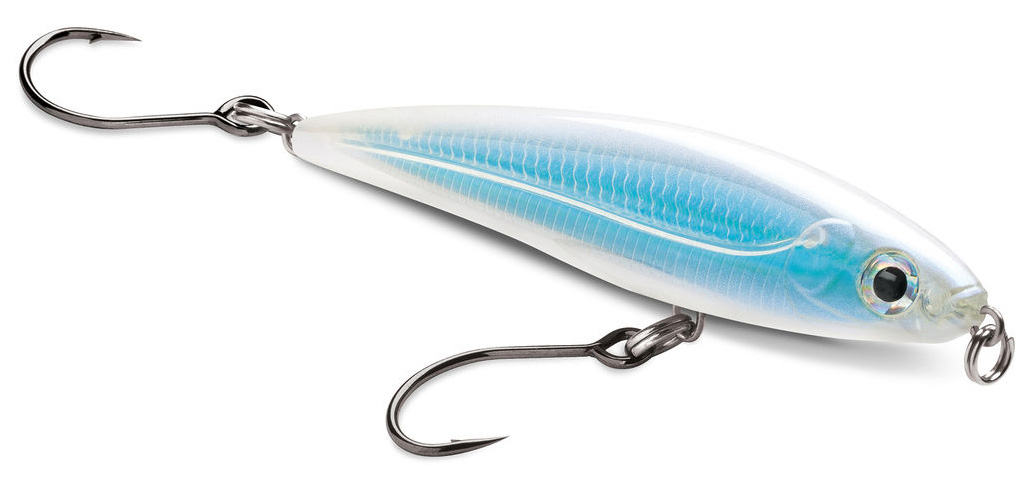
The glide bait has only really become popular for surfcasters in recent years, but in all reality it is not a new bait. Originally developed as a freshwater lure for the likes of large musky, their crossover was inevitable. I liken the action of a glide bait to that of a darter (one of my favorite plugs to throw in the surf) but they take that wandering, natural movement a step further. Lures like the Loki SeaSlider, Sebile Stick Shadd, Fatty Lures and others fall into this category.
Glide baits have become one of those lures that always ends up in my surf bag, regardless of where I plan to fish. They perfectly mimic an injured baitfish carelessly making its way along in the current, and the hits can be bone-jarring. In the spring when hunting weakfish or early-season schoolies, smaller offerings are perfect for those small baitfish seen in the surf. As the season progresses and full-size baitfish are on top of the striper’s menu, I graduate up to larger models. However, when albies and bonito return in the late summer and early fall, those small, slender gliders like the Rapala X-Rap Twitchin’ Minnow and Twitchin’ Mullet or the Shimano Coltsniper perfectly fit the bill.
While I will fish glide baits in almost any scenario short of gale-force winds and large, crashing waves, they do excel in certain situations. When the current slows up on either side of slack tide, slowly cranking a glide bait along the edge of some structure is very productive. When the current begins to pick up momentum, casting out perpendicular to the shoreline and just barely retrieving fast enough to stay in contact with the plug has proven deadly at times, especially when schools of bunker are present. If albies and bonito are smashing pods of bait, then a fast, straight retrieve with infrequent pauses often draws a strike.
The retrieve of a glide bait is very important to its success, and I prefer a lure that has inherent action on a straight retrieve. As noted above, a glide bait has more of a “wander” than a swim as it makes wide side-to-side movements. This action can be enhanced by lightly popping your rod tip from time to time, but I generally do so only when a straight retrieve isn’t producing or the fish are just bumping the lure.
